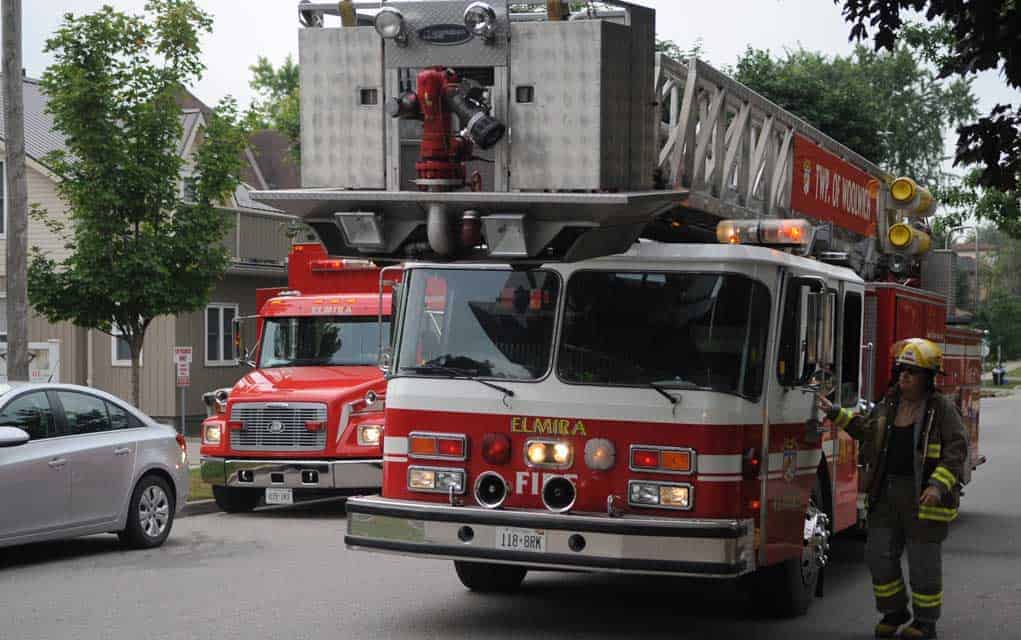A grassroots study led by two University of Waterloo students’ hopes to identify cultural heritage landscapes within Woolwich and Wellesley townships.
The project will be used to take inventory on landscapes within the townships that residents deem significant in some regard.
Rebecca Koroll, an environmental studies planning master’s student, and Chris DeGeer, also a master’s student in the school of planning, are the lead student researchers on the project. They’re asking for the public’s input to help make the project successful.
“We want to know what is important to people in the townships,” she said. “We ourselves are hoping to become experts through the interviews and people that we get to talk to, because it is supposed to be a ground-up approach where we are talking to people to find out what is important to them, not us picking locations and saying, ‘is this important to you?’”
Being carried out through the Heritage Resource Centre at the University of Waterloo, the study is in coordination with North Waterloo Branch of the Architectural Conservancy of Ontario, the not-for-profit organization Mitacs, the Townships of Woolwich and Wellesley and the Regional Municipality of Waterloo.
“We are hoping to engage the mayor and council of each township. The idea is to make sure that we are getting representation from each,” she said.
Planning regulation in Ontario directs municipalities to conserve significant cultural heritage landscapes, requiring the identification and evaluation of their significance and then determining the extent to which the community values them, she explained.
With the study they are hoping to identify an inventory of CHLs, in order to help the townships with that process.
A CHL is a defined geographical area that may have been modified by human activity and is identified as having cultural heritage value or interest by a community, including an aboriginal community.
Examples may include heritage conservation districts designated under the Ontario Heritage Act – villages, parks, main streets, trailways and the like – and areas recognized by federal or international designation authorities – national historic site designation, for instance.
“Culture and heritage are two words that have a lot of different meanings to a lot of different people, and we are trying to take a broader approach to understanding why landscape is valued and the types of uses and experiences people are having there,” DeGeer explained. “So it might be something like recreation – someone might really enjoy cycling through the township, or commuting to work, looking out the window on your commute to work and having an experience through that.”
DeGeer noted they are also interested in the natural values that people have.
“Maybe it is not necessarily pristine natural environment, but even that relationship between humans and nature is essentially what cultural landscape is.”
Although the two are not directly from the area, DeGeer, an avid cyclist, and Koroll, who enjoys the outdoors and hiking, are looking to become experts in the townships’ landscapes through its residents.
Collaborating with the public, they will identify, evaluate and map the geographical locations of the candidate CHLs.
The two are asking people to submit places that they value through four different methods.
“We are going to be conducting one-on-one interviews, we also have what we call a community action kit,” DeGeer said, explaining the kit is a self-directed way for groups to come together and work through collaboration to identify potential CHLs on their own without a researcher present. “There is a web-based method with options to circle locations on the map of the townships that are of value to you, with some questions associated with it.”
DeGeer said there is also an option that allows people to take photos of landscapes or submit previously photographed landscapes that are places of value to them and submit them.
“In the end all of these places will come together on a map and be able to identify hotspots or areas of strong consensus of certain values or places of value, even if the values themselves are not the same,” he said.
They are also encouraging people to get in touch with them to learn more.
“Even if they have questions they can contact us. They don’t have to just contact us if they want to participate,” said Koroll.
The study will not designate CHLs. It will, however, compile a candidate list to be given to the townships and region for their consideration in future planning decisions.
“We are not designating it. The point of the project is to make a list of candidate cultural heritage landscapes,” she said.“It is more to kind of round up everything that is important for the candidate list and eventually, through the official planning processes, some day they could be designated later on in the future.”
Noting the beauty of the townships, Koroll said the researchers are really looking forward to exploring the landscapes more – and investigate further the places that people bring forward.
“What we are really trying to get at is, ‘What is of value to people?’ – that is why we aren’t trying to suggest landscapes. We want people to share their values, where they exist, and where they lie within the townships,” she said.
The leads are asking the public to bring forward their suggestions through any of the four methods or contact them directly for more information.
You can learn more about the study online at www.culturalheritagelandscapes2017.wordpress.com.









